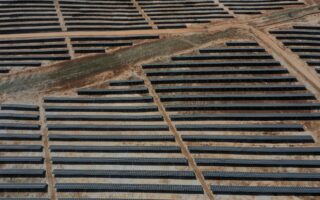Construction to get €27 bln by 2026
Resources from various European subsidy programs and national cash will bolster the industry

The Recovery and Resilience Fund’s resources may well become the catalyst for construction to again become one of the pillars of the Greek economy, after the contraction of the last 15 years.
According to a study by the Foundation for Economic and Industrial Research (IOBE) on behalf of the Public Works Engineering Contractors Fund (TMEDE), the total resources expected to be leveraged for construction projects are expected to amount to a total of 27 billion euros (grants of €13.3 billion and loans worth €13.7 billion) for the 2022-26 period.
In addition, IOBE estimates that €8.7 billion will be allocated to infrastructure through the new European Union subsidy package (NSRF 2021-27). In the medium term, additional investment in infrastructure and housing is estimated to be up to 4.1 percentage points of gross domestic product annually (compared to 2020) – with the share of construction investment rising to 8.1% of GDP in 2025 from 4% in 2020.
At the same time, this construction jump is set to significantly boost the size of companies in the sector, with estimates pointing to 2021-26 turnover doubling to almost €20 billion in 2026 (from €10 billion in 2021). It is also estimated that the output value of infrastructure and residential construction projects will follow a strong, upward trajectory in 2022-26, topping €18 billion in 2025 (from €7.6 billion in 2020).
The challenge is quite big, not only for the construction industry, but also for the banks that will be asked to finance the companies to undertake the projects. According to IOBE, annual gross loan flows from €2-3 billion will be required in 2022-26.
This is not an easy equation, given that project implementation times are very tight, as the Recovery Fund program is front-loaded, with most of it contracted and implemented within the first two years. Funding difficulties and the higher borrowing costs for technical businesses and professionals (compared to other eurozone countries) constitute obstacles.




